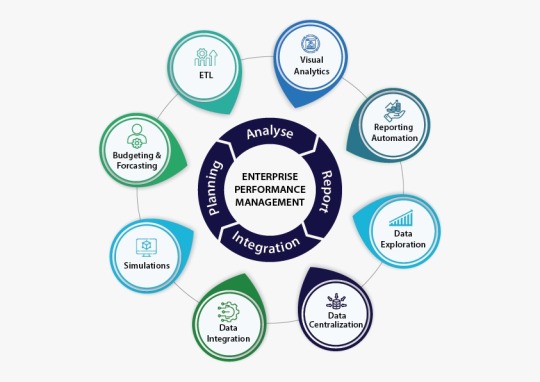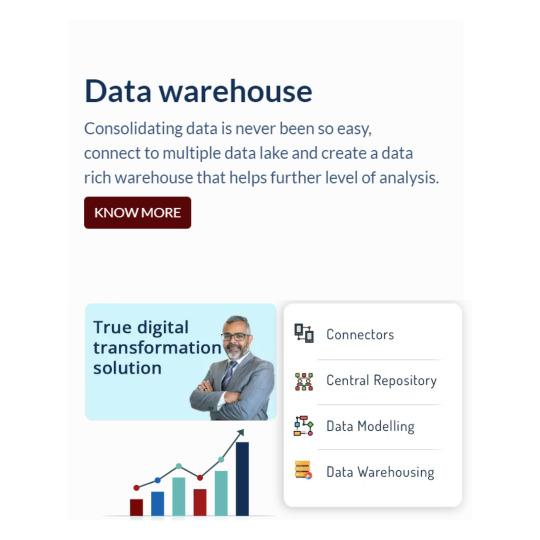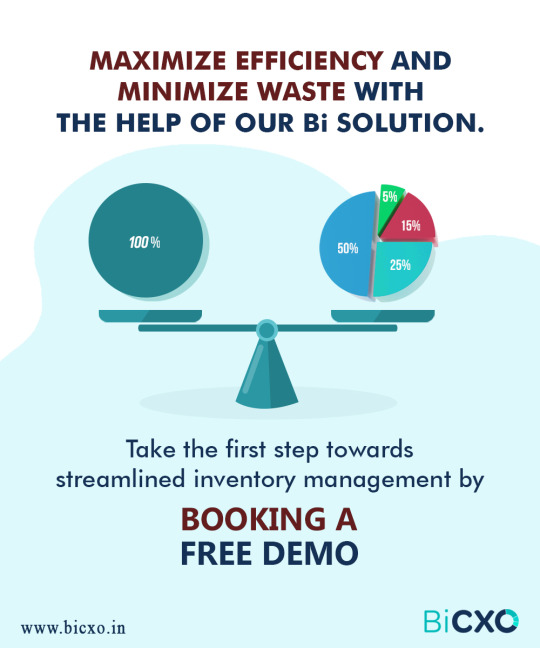Text
Unlocking Business Benefits: The Case for GST Reconciliation Software
Since the implementation of Goods and Services Tax (GST), businesses have faced a paradigm shift in tax compliance requirements. To navigate these regulations effectively, organizations must invest in advanced tools like GST reconciliation software. This article delves into the myriad benefits of such software and its strategic significance in modern business operations.

Enhanced Accuracy and Efficiency: Manual reconciliation of GST data is not only time-consuming but also prone to errors. GST reconciliation software automates this process, leveraging advanced algorithms to identify and rectify discrepancies in real-time. By minimizing human errors, businesses can ensure accuracy in tax filings and avoid penalties.
Time and Cost Savings: Automating GST reconciliation tasks frees up valuable resources and reduces operational costs. By handling large volumes of data efficiently, the software eliminates the need for manual data entry and repetitive tasks. Additionally, it identifies overlooked tax credits or refunds, leading to cost savings and improved financial management.
Enhanced Compliance: Compliance with GST regulations is crucial to maintain a good reputation and avoid penalties. GST reconciliation software ensures ongoing compliance by comparing sales and purchase data with filed GST returns. By alerting businesses to potential compliance issues, such as incorrect tax rates or unreported transactions, the software enables proactive rectification and mitigates risks.
Real-Time Monitoring and Reporting: Real-time monitoring and reporting features provide businesses with insights into their GST compliance status, tax liabilities, and potential refunds. Comprehensive reports and dashboards offer visibility into critical metrics, enabling informed decision-making and proactive management of tax strategies.
Integration and Scalability: Seamless integration with existing ERP or accounting systems streamlines tax compliance processes, enhancing operational efficiency. As businesses grow, the software can scale accordingly to accommodate increasing data volumes and complexity. This scalability ensures that businesses can maintain accuracy and efficiency in their tax compliance efforts as they expand.
Data Analytics and Reporting Capabilities: The software’s data analytics capabilities enable businesses to gain deeper insights into their tax-related information. By analyzing patterns, trends, and anomalies within GST data, organizations can optimize tax planning strategies and make data-driven decisions to improve financial performance.
Reconciliation Reports: Reconciliation reports play a crucial role in ensuring data integrity across books and GST returns. By automating comparisons between different sources of data, the software minimizes errors and facilitates smoother tax filing processes. These reports empower businesses to maintain compliance and accuracy in their tax reporting, contributing to overall operational efficiency.
In conclusion, investing in GST reconciliation software is not just a wise financial decision but also a strategic move towards maximizing profits and driving operational efficiency. By automating reconciliation tasks, businesses can enhance accuracy, save time and costs, ensure compliance, and gain valuable insights into their tax-related data. Embracing technology in tax compliance processes enables organizations to stay ahead in a rapidly evolving regulatory landscape and achieve long-term success.
Read the full article by clicking here
Or
Visit our website at “bicxo.co”
#business solutions#bisolution#data#bicxo#enterprise performance management#epmsoftware#gst#gst software#software#insights#GST Reconciliation Software
0 notes
Text

In the realm of financial management, BiCXO stands out as a versatile tool that empowers finance leaders to focus on analysis rather than getting bogged down in day-to-day reporting tasks. By automating the reporting process, BiCXO eliminates errors and delivers impactful reports in minutes, a stark contrast to the time-consuming traditional methods. For instance, while generating income statements manually can take anywhere from 2 days to 24 days, BiCXO accomplishes the task in less than 5 minutes. This remarkable efficiency allows professionals to dedicate more time to insightful analysis rather than laborious reporting. With BiCXO, a wide array of reports, including income statements, balance sheets, cash flow statements, financial highlights, stakeholder reports, and various others
#business solutions#business intelligence#business intelligence software#bi tool#bisolution#businessintelligence#bicxo#businessefficiency#data#data warehouse#bi reporting automation
0 notes
Text

BiCXO streamlines financial reporting, data warehousing, planning, and analytics processes for organizations, offering automated reports, a centralized data warehouse, EPM software for budgeting and forecasting, and analytics tools with real-time insights. Its reporting automation simplifies data extraction and template creation, while the data warehouse integrates various sources for organized information. The EPM software facilitates budgeting and forecasting with workflow engines and version controls for transparency. Analytics tools provide visual dashboards, real-time alerts, and mobile access for operational efficiency. BiCXO ensures data security, role-based access, and flexibility in data input, with fast implementation. By combining EPM software and data analytics, BiCXO enhances decision-making and drives organizational outcomes effectively, offering a comprehensive solution for financial management and analysis.
#enterprise performance management#business intelligence#business solutions#bi tool#bisolution#bicxo#businessefficiency#data warehouse#data#businessintelligence#business intelligence software
0 notes
Text
Maximizing Business Potential with Enterprise Performance Management (EPM)
Businesses today operate in a dynamic environment where the ability to make informed decisions based on accurate data is paramount. Enterprise Performance Management (EPM) emerges as a critical tool for organizations seeking to leverage data-driven insights to achieve their strategic objectives.
Understanding EPM: EPM encompasses a set of integrated processes and methodologies designed to manage and enhance organizational performance. Its key components include financial planning and analysis, performance measurement, strategy management, and risk management.
Benefits of EPM:
Improved Decision-Making Accuracy: EPM enables real-time data analysis and forecasting, providing organizations with accurate information to make informed decisions.
Enhanced Strategic Planning: By identifying opportunities and risks through robust data analysis, organizations can evaluate different scenarios and make data-backed strategic choices.
Increased Operational Efficiency: EPM allows organizations to identify inefficiencies and optimize resources based on data insights, thereby enhancing operational efficiency.
Better Resource Management: Through data-driven insights, EPM helps organizations allocate resources effectively, ensuring maximum productivity.
Enhanced Collaboration: EPM fosters collaboration and communication across departments by providing consolidated and accurate data, promoting transparency and alignment.
Improved Performance Monitoring: With EPM, organizations can measure success through key performance indicators (KPIs) and monitor performance indicators in real-time, enabling timely adjustments.
Greater Financial Visibility: EPM consolidates financial data, providing organizations with a comprehensive view of their financial health and enabling better financial planning and analysis.
Regulatory Compliance: EPM ensures accurate and reliable reporting, helping organizations comply with regulations and standards.
Best Practices for Successful Implementation:
Data Quality: Ensure data cleanliness, consistency, and reliability.
Data Integration: Integrate data from various sources for comprehensive analysis.
Data Security: Implement robust security measures to protect sensitive data.
Change Management: Develop a comprehensive plan for managing organizational change.
User Adoption: Involve end-users early and provide comprehensive training.
Continuous Improvement: Continuously evaluate and refine the EPM system to meet evolving business needs.
In conclusion, EPM offers organizations a transformative approach to decision-making and performance management. By embracing EPM solutions and prioritizing data-driven insights, businesses can unlock their full potential, drive growth, and thrive in today's competitive landscape.
To read the full blog click here
Or
Visit our website by clicking here
#business solutions#business intelligence software#businessintelligence#data#epmsoftware#EPM tool#bi tool#businessefficiency#business intelligence#bisolution#bicxo#data warehouse#artificial intelligence
0 notes
Text

Learn why you need a EPM software.
Discover the power of our EPM Software for streamlined operations and enhanced performance. Dive in now!
#epmsoftware#business intelligence software#software#business solutions#bi tool#enterprise performance management#bicxo#data#data warehouse#businessefficiency#automated reporting
0 notes
Text

BiCXO data warehousing software
BiCXO's dedication to holistic solutions encompasses the establishment of a resilient Data Warehouse. Going beyond mere storage, BiCXO provides potent data consolidation software that effortlessly merges data from diverse origins.
To know more visit our website by clicking here
#enterprise performance management#epmsoftware#business intelligence#business solutions#business intelligence software#bi tool#bisolution#epm#software#businessefficiency#business growth#BiCXO#dataanalytics#data warehouse#dataanalysis#datavisualization#data
0 notes
Text
Unlocking Financial Excellence: The Power of Reporting Automation

Financial reporting automation emerges as a driving force in the finance domain, streamlining processes and ensuring accuracy and timeliness. This transformative tool empowers organizations to navigate the complexities of modern finance with enhanced agility and reliability. With advanced AI-driven software, critical aspects of financial reporting are streamlined, ushering in a new era of accuracy and effectiveness.
Understanding financial reporting automation is key. It represents the adoption of software specifically designed to manage crucial tasks seamlessly, from account reconciliation to the seamless generation of financial reports and statements. This not only simplifies processes for finance teams but also serves as a robust business intelligence reporting software solution, reducing errors and enhancing overall operational efficiency.
The benefits of automating financial reporting are substantial. From quick approvals to boosted efficiency, automation plays a pivotal role in eliminating delays and expediting tasks that once consumed significant time. Automated solutions instill confidence in the accuracy of financial data, minimizing the potential for human error and enhancing data integrity. User-level access and comprehensive audit trails further enhance accountability and facilitate adherence to industry regulations.
Selecting the right financial reporting automation tool is critical for effective implementation. Organizations should prioritize solutions with an understandable report structure, actionable insights, and customizable dashboards. User-friendly features enhance the overall user experience, making it easier for finance teams to navigate the software seamlessly.
Implementing tools for automation requires a structured approach. Standardizing processes, designing workflows, and checking integrations are essential steps to ensure optimal deployment. Automation extends to various financial reports, including MIS reports, annual and quarterly financial statements, financial statement analysis, budget vs. actuals, intercompany eliminations, and currency translations.
Financial reporting automation stands as an indestructible force in the finance sector, introducing unparalleled efficiency, accuracy, and transparency. Understanding its advantages, selecting the right tools, and adhering to best practices streamline operations and open avenues for intelligent decision-making. Through the adoption of business intelligence software, finance leaders can transcend traditional boundaries, liberating themselves from the burdensome, error-prone tasks associated with month-end stress. The focal point is redirecting attention towards substantial insights that empower effective leadership and propel entities towards progressive futures.
To read the full detailed blog please click here
Or
Visit our website by clicking here
#business intelligence#reporting automation#business solutions#software#bisolution#epm#enterprise performance management#businessintelligence#automated reporting#bi tool#financial reporting#financial reporting automation
0 notes
Text

Choosing Business Intelligence (BI) tools for start-ups is a nuanced process. Understanding monitoring needs, data availability, and adaptability is crucial. A comprehensive BI strategy, including needs assessment, data integration, tool selection, and ongoing evaluation, is vital. BiCXO BI solutions offer a streamlined approach, combining technology and expertise. While self-service tools provide control, BiCXO ensures efficiency and accessibility in the evolving business landscape. The choice depends on a start-up's resources and readiness to invest in BI capabilities. A key, informed approach aligning data analysis with organizational goals is the path to success.
To read the full article click on this link: https://bicxo.co/blog/which-is-the-best-bi-tool-in-the-market/
#business intelligence#business intelligence software#business solutions#bi tool#businessintelligence
1 note
·
View note
Text
Is your inventory valued as ‘CASH’ in your warehouse?
Treating inventory as ‘CASH’ is crucial for SMEs. About 20% of stock is often overlooked, leading to non-moving or damaged goods. This oversight inflates profits on sheets, not in the bank. Shifting perspective transforms handling — vigilance, daily counts, and prevention of obsolescence.
To keep inventory liquid, maintain optimal levels, preventing excess. Unfortunately, many lack a strategy, resulting in millions blocked in surplus stock.

There are two main reasons contribute to funds being locked in inventory:
Ignorance of Ideal Inventory: SMEs suffer from excess inventory, unaware of the ideal quantity. Calculating the ‘ideal inventory’ involves determining the Expected Delivery Time (EDT) and Total Lead Time (TLT). Engage consultants and use business intelligence tools for accurate computations.
Overproduction: Organizations often produce more than they can sell, relying on outdated sales projections. Monthly reviews, early warning systems, and analytics solutions aligned with actual sales trends can prevent excessive production and procurement.
Addressing these issues ensures millions locked in inventory can be released and boost the bottom line. Stay tuned for more insights in my next blog.
To read the detailed article visit best bi blog
To know more click here
#business intelligence#business intelligence software#business solutions#bi tool#bisolution#businessintelligence#data warehouse#inventorymanagement
0 notes
Text
Which is the best Bi tool in the market?
The process of identifying the best BI tools for startups is a fascinating journey that involves thoughtful consideration of various factors. The BI landscape is rich with a diverse array of tools, each offering unique features and capabilities. While it’s tempting to believe that a high-caliber BI tool can effortlessly resolve all business challenges, the reality is more intricate. The heart of the matter lies in recognizing the unique needs of the business and how a BI tool can effectively cater to those needs. In this context, a judicious approach is to examine the essential questions: What aspects of the business require monitoring? How often should this monitoring occur? And what data points are necessary compared to what is already available? Only through a meticulous analysis of these fundamental aspects can a startup pinpoint the BI tool that harmonizes with their distinctive circumstances.
Defining the Business Monitoring Needs
Before diving into the realm of BI tools, it is vital for startups to articulate what they need to monitor to reach their objectives. The nature of this monitoring can differ significantly from one business to another. For some, it may involve tracking sales performance and customer engagement, while for others, it might encompass supply chain logistics and inventory management. A meticulous comprehension of these needs forms the bedrock of the BI tool selection process.
The Frequency of Monitoring
Equally crucial is establishing the frequency at which this monitoring should take place. Data may require real-time analysis, such as website traffic or media interaction, while other data may be suitable for daily, weekly, or monthly review. The temporal dimension of data analysis is a pivotal factor that guides the selection of BI tools.
Aligning Data Points with Business Goals
In the realm of BI, the availability of data points plays a pivotal role. It is imperative to identify the data required to meet business objectives and then evaluate the data presently accessible within the organization. This analysis allows startups to gauge whether the available data is sufficient for their BI needs or if additional data sources are needed. The alignment of data with business goals is fundamental to the effectiveness of BI implementation.
Adaptability in an Ever-Evolving Business Landscape
Businesses, especially startups, operate in a dynamic environment where change is constant. Therefore, the chosen BI solution should be adaptable and capable of addressing evolving business circumstances. It should have the ability to accommodate real-time updates and changes, ensuring the full potential of Business Intelligence is harnessed.
The Role of BiCXO BI Solutions
Navigating these intricacies may seem daunting, but a new generation of BI solutions, such as BICXO, offers a promising path forward. These BiCXO BI Solutions amalgamate technological and functional expertise to guide startups through their BI journey. They provide an integrated package that streamlines the process of comprehending and implementing BI tools, making it simpler for organizations to overcome the challenges of data analysis and business intelligence. With BiCXO BI Solutions, startups can tap into the power of data-driven insights and make more informed decisions.
Formulating a Comprehensive BI Strategy
Given these considerations, it is clear that organizations, especially startups, need to construct a comprehensive BI strategy. This strategy should encompass the following key components:
Needs Assessment: Begin by conducting a thorough assessment of the specific monitoring needs of the business. This entails a detailed analysis of what aspects require monitoring, the frequency of data analysis, and the necessary data points.
Data Availability and Integration: After identifying the monitoring needs, evaluate the existing data sources within the organization. Determine if the available data is adequate for the desired analysis or if additional sources need to be integrated.
Tool Selection: Following a clear understanding of the monitoring needs and data availability, perform a systematic evaluation of BI tools. The decision between self-service BI tools and BiCXO BI solutions like BICXO should be based on a comprehensive cost-benefit analysis.
Implementation and Training: The implementation of a BI solution goes beyond tool selection. It necessitates training employees to use the tool effectively, setting up data pipelines, and ensuring data security. BiCXO BI solutions often offer support in these areas, simplifying the implementation process.
Continuous Adaptation: Acknowledge that business circumstances are in a constant state of flux. The chosen BI solution must possess the flexibility to adapt to these changes, including real-time data updates and adjustments to monitoring parameters.
Data-Driven Decision: A definitive point of a BI methodology is to work with data-driven decisions. Guarantee that the BI arrangement offers noteworthy experiences that illuminate vital and functional choices.
Monitoring and Evaluation: Establish a system for monitoring the effectiveness of the BI solution. Regularly assess its impact on business operations and make necessary adjustments as required.
Scalability: As a startup expands, its BI needs will evolve. Confirm that the chosen BI solution is scalable and can accommodate the increasing complexity of data analysis.
Choosing Self-Service BI Tools vs. BiCXO BI Solutions
The decision between self-service BI tools and BiCXO BI solutions is not one-size-fits-all. It depends on the startup’s unique requirements and circumstances. Here is a comparative analysis of these two approaches:
Self-Service BI Tools:
Pros:
Offer greater control and flexibility in data analysis.
Extremely price-sensitive.
Can be tailored to specific business needs.
Encourage the development of in-house expertise.
Cons:
Requires a significant learning curve, potentially slowing down implementation.
May lack the necessary support and guidance for individuals new to data analysis.
Long set-up time that reduces overall speed.
Possess limited capacity to adapt to rapid changes in business circumstances.
BiCXO BI Solutions (e.g., BICXO):
Pros:
Streamline implementation with expert guidance.
Reduce the learning curve, enabling organizations to swiftly leverage BI capabilities.
Provide ongoing support and assistance.
Better equipped to handle real-time data updates and evolving business situations.
Offer a comprehensive package that combines technology and expertise.
Cons:
May involve higher initial costs compared to self-service tools.
May be less customizable to unique business requirements.
Organizations may become reliant on external expertise.
The choice between self-service BI tools and BiCXO BI solutions hinges on the resources, expertise, and readiness of the startup to invest in BI capabilities. While self-service tools offer greater control, BiCXO BI solutions provide a more streamlined and guided approach to harnessing the power of data for business growth.
Conclusion
Selecting the best BI tools for startups is a nuanced and multi-faceted process that goes beyond mere technological considerations. It necessitates a profound understanding of the specific monitoring needs, data availability, and adaptability to changing business circumstances. A comprehensive BI strategy that encompasses needs assessment, data integration, tool selection, implementation, and ongoing evaluation is vital for making informed decisions.
In this evolving business landscape, BiCXO BI solutions present an appealing option for startups. These solutions merge technology and expertise to simplify the BI journey, making it accessible and efficient. By embracing a holistic approach to BI, startups can unlock the full potential of data-driven insights and position themselves for informed decision-making and sustainable growth. At last, the way to progress in the realm of business knowledge lies in a key and very much educated approach that adjusts information examination to hierarchical objectives and ceaselessly adjusts to the changing elements of the business world.

#business intelligence#business solutions#bi tool#business intelligence software#businessintelligence#bisolution
1 note
·
View note
Text
Optimizing Working Capital: A Comprehensive Guide for CFOs
In the dynamic landscape of corporate finance, the prevalence of overdraft facilities as a vital funding strategy is unmistakable. While these facilities play a crucial role in bolstering working capital, a note of caution is sounded for Chief Financial Officers (CFOs) to maintain a vigilant eye on overdraft levels. This blog explores the correlation between overdrafts and working capital, delving into analytical techniques that leading CFOs employ to optimize working capital and, consequently, reduce overdraft risks.
Analyzing the WC-Turnover Ratio
The Working Capital (WC) turnover ratio, a key metric representing the sales-to-average working capital ratio, stands at the forefront of effective working capital management. A higher ratio indicates a swifter rotation of capital, reducing tied-up funds in working capital and, consequently, lowering overdrafts. Calculating the ideal WC turnover ratio, specific to each company, involves a meticulous evaluation of the working capital cycle, considering credit terms, inventory policies, and vendor payment terms.
Desired vs. Actual Working Capital Levels
Comparing desired and actual working capital levels is the next crucial step. This analysis unveils opportunities for companies to optimize working capital and reduce overdraft limits. The magnitude of the gap serves as an indicator of the potential for improvement, highlighting areas where adjustments can be made to enhance efficiency.
80-20 Analysis
Recognizing the need for a deeper understanding, an 80-20 analysis becomes imperative. Scrutinizing products or business segments contributing significantly to the working capital gap provides insights into areas requiring focused attention. Business intelligence tools, integrated with algorithms, streamline this analysis, facilitating a targeted approach to working capital optimization.
Focus on Components: Receivables and Inventory
Once identified, the focus shifts to the components of working capital, namely receivables and inventory. While detailed strategies for reducing receivables and inventory are covered separately, this blog underscores the importance of addressing these components for the identified products and business segments. Strategies should align with the unique requirements of each component, ensuring a comprehensive approach to working capital management.
Continuous Monitoring and Benchmarking
Recognizing that optimization is an ongoing process, CFOs are advised to establish benchmark Key Performance Indicators (KPIs) for WC-turnover ratio, Days Sales Outstanding (DSO), and Inventory holding period. These benchmarks provide a baseline for performance evaluation at both the overall and product/business segment levels. Continuous monitoring, facilitated by business intelligence tools with alert mechanisms, is essential to promptly identify and address deviations from set KPIs and historical trends.
Conclusion: Bridging the Gap
In conclusion, CFOs play a pivotal role in bridging the gap between ideal and current working capital levels. Root cause analysis and robust monitoring mechanisms are essential components of a proactive approach that ensures alignment with strategic objectives. In the ever-evolving financial landscape, CFOs must foster a culture of continuous improvement and vigilance in working capital management. Through meticulous and data-driven strategies, CFOs can guide their companies toward financial resilience and sustainability, steering clear of overdraft risks.
1 note
·
View note
Text

Get ready for a better, more productive Business .
Know more: www.bicxo.co
#business intelligence#business intelligence software#business solutions#bi tool#bisolution#businessintelligence#bitool#assistedbi#dataanalysis#dataanalytics#data#SMEs#smebusiness#businessowners#manufacturing#smartsolution#bicxo
0 notes
Text

Revolutionizing the Way You Strategize and make business decisions BiCXO: AI driven business intelligence tool.
To know more visit us at: www.bicxo.co
#business intelligence#business intelligence software#business solutions#bi tool#bisolution#decisionmaking#planning#StrategicSolutions#StreamlinedDecisions#DataAnalytics#BusinessEfficiency#SmarterDecisions#EffectiveDecisionMaking#DataSolutions
0 notes
Text
What is business intelligence all about?

The article discusses the importance of business intelligence (BI) solutions in helping companies transform data into actionable insights. It highlights the challenges faced by companies in managing scattered data and the need for a BI solution to answer key questions about the current state of the business and make informed decisions. The article emphasizes the role of BI in tracking financial and operational metrics, gaining critical business insights, and monitoring employee performance. It also mentions that BI can use structured and unstructured data for strategic and operational decision-making. The article mentions some popular self-service BI tools available in the market and introduces Assisted BI Solutions like BICXO, which offer techno-functional expertise to implement a robust BI solution without the need for additional hiring. to learn more visit: https://bicxo.co/blog/what-is-business-intelligence-all-about/
#businessReportingSoftware#businessintelligence#bisolution#bestbitool#datavisualization#dataanalysis#bestbi
2 notes
·
View notes